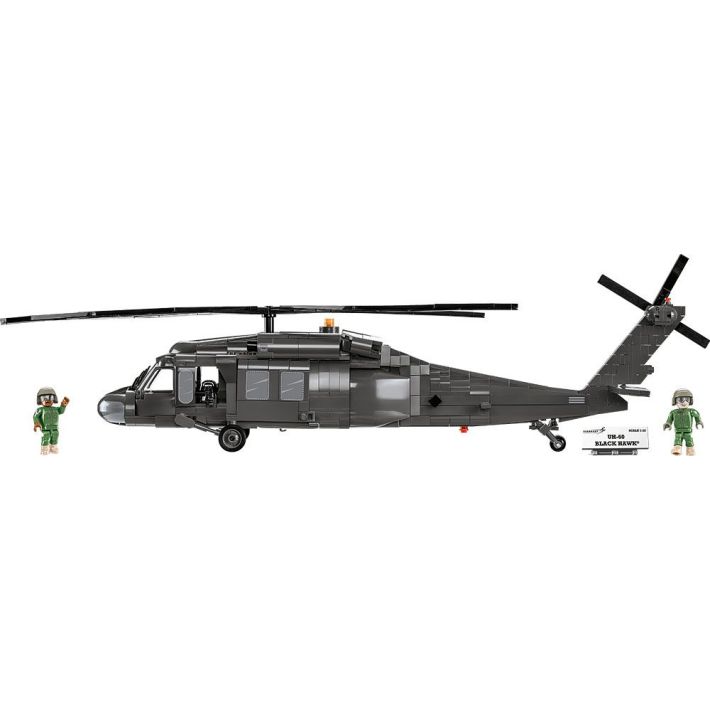Taking Flight: Uh-60 Black Hawk Pilot Qualification Process Explained
Taking Flight: Uh-60 Black Hawk Pilot Qualification Process Explained
Blog Article
The UH-60 Helicopter: Navigating Through Its History, Style, and Substantial Role in Aeronautics
The UH-60 helicopter, typically described as the Black Hawk, stands as a testimony to the advancements in air travel technology and its indisputable influence on both army and civilian procedures. From its humble beginnings to its present status as an icon of integrity and flexibility, the development of the UH-60 has been noted by continuous technology and adaptation to meet the evolving requirements of the aeronautics industry. As we explore its history, design complexities, and the critical function it plays in different fields, a deeper admiration for this famous helicopter emerges, clarifying the substantial contributions it has actually made to the world of aviation.
Advancement of the UH-60 Helicopter

The evolution of the UH-60 helicopter can be mapped back to the demand for a dependable and versatile utility aircraft that might fulfill the demanding demands of modern-day armed forces operations. Created by Sikorsky Aircraft, the UH-60 Black Hawk initially took flight in 1974, with the U.S. Military becoming its primary driver. Over the years, the UH-60 has actually undergone several upgrades and variants to enhance its capabilities and efficiency.

Design Innovations and Functions

Additionally, the UH-60 features an advanced avionics collection that consists of sophisticated navigation systems, communication equipment, and electronic display screens. These technological advancements enhance situational awareness for the staff, boosting general objective effectiveness and security. The helicopter's large cabin layout helps with very easy and quick loading and discharging of soldiers, devices, and casualties, making it a flexible possession for military procedures and calamity alleviation efforts.
In addition, the consolidation of composite products in vital architectural parts lowers weight while preserving resilience, increasing the UH-60's efficiency and fuel effectiveness. The UH-60 helicopter's ingenious style elements collectively add to its credibility as a reputable and highly capable aircraft in both armed forces and noncombatant aviation markets.
Military and Civilian Applications
With versatile abilities suited for a range of operational needs, the UH-60 helicopter serves both military and private industries successfully. The UH-60's innovative avionics, protective systems, and convenience have solidified its placement as a cornerstone of armed forces helicopter fleets.
In the private field, the UH-60 serves a plethora of functions, including firefighting, law enforcement, emergency medical services, and corporate transport. Its reliability, maneuverability, and roomy cabin make it a preferred selection for utility goals. In addition, the UH-60's flexibility for VIP transportation and overseas procedures better highlight its importance in civilian applications. Whether in armed forces or noncombatant use, the UH-60 helicopter remains to verify its worth as a flexible and indispensable airborne platform.
Impact on Aeronautics Workflow
Having developed its significance in noncombatant and armed forces applications, the UH-60 helicopter's influence on air travel procedures prolongs beyond its flexible capabilities to influence a broad array of airborne goals. In army setups, the UH-60 plays a crucial role in army search, transportation and rescue operations, clinical emptying, and unique operations sustain. Its capacity to quickly browse diverse terrains and unfavorable weather condition conditions makes it a valuable property in making sure mission success and employees safety and security. The UH-60's adaptability permits for rapid release and removal of troops in combat zones, boosting operational efficiency and agility.
In noncombatant operations, the UH-60 offers different essential functions, such as firefighting, police assistance, calamity alleviation initiatives, and airborne studies. uh-60. Its convenience makes it possible for fast feedbacks to emergency situations and all-natural catastrophes, assisting in saving lives and protecting areas. Furthermore, the UH-60's dependability and endurance make it a preferred option for energy missions, including transportation of cargo and employees to remote locations. In general, the UH-60 helicopter substantially affects air travel procedures by offering unparalleled abilities and support throughout a broad range of objectives.
Future Developments and Potential Customers
The development of the UH-60 helicopter is positioned to transform aeronautics abilities and reshape functional paradigms in the coming years. Developments in modern technology and style are driving the development of read this next-generation UH-60 variations that assure boosted speed, mission, and dexterity adaptability. One vital area of emphasis for future UH-60 versions is enhancing self-governing capacities to improve functional performance and security. By incorporating advanced self-governing trip systems, the UH-60 can reduce pilot workload, allow intricate missions in difficult settings, and boost overall mission efficiency.
Additionally, there is a growing emphasis on sustainability and gas effectiveness in the style of future UH-60 helicopters (uh-60). Makers are discovering brand-new products, propulsion systems, and aerodynamic enhancements to minimize environmental effect and operating expenses. These improvements not only benefit the environment yet also add to the lasting stability and competition of the UH-60 in the quickly developing aviation industry
Verdict

The UH-60 helicopter, usually referred to as the Black Hawk, stands as a testimony to the advancements in aviation modern technology and its obvious impact on both military and civilian procedures.Having actually developed its importance in military and private applications, the UH-60 helicopter's influence on aviation procedures prolongs beyond its versatile capacities to more information affect a wide variety of airborne goals. On the whole, the UH-60 helicopter considerably affects aviation procedures find here by providing unmatched capabilities and assistance throughout a wide spectrum of objectives.
The advancement of the UH-60 helicopter is positioned to transform air travel abilities and reshape operational paradigms in the coming years. As technology proceeds to breakthrough, the future developments and leads for the UH-60 helicopter stay encouraging, guaranteeing its continued relevance in the area of aeronautics.
Report this page